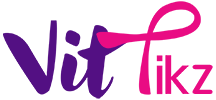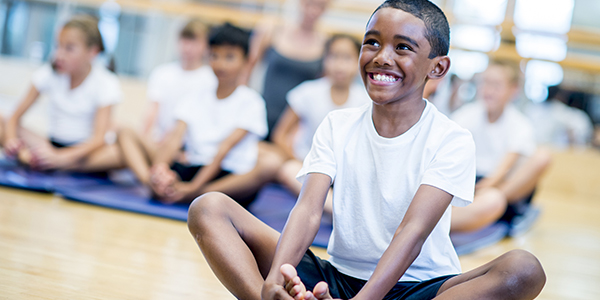Classroom management is a critical factor in student success. As teachers, we need to create an environment conducive to learning and foster positive relationships with our students. Effective classroom management strategies help reduce disruption, increase student engagement, and encourage a sense of community in the classroom. In this article, we will explore 20 of the best classroom management strategies that can be used to ensure an effective and successful learning environment for all students.
Classroom Management
One of the most effective classroom management strategies is to establish clear and consistent rules and expectations for behavior. This includes setting consequences for not following the rules, as well as rewards for positive behavior. It’s important to communicate these rules clearly to students and consistently enforce them.
Another effective strategy is building positive relationships with students. When teachers take the time to get to know their students on a personal level, they can better understand their individual needs and tailor their approach accordingly. Teachers can also work on creating a positive classroom culture where respect, kindness, and inclusivity are valued.
Lastly, incorporating engaging activities into lessons can help manage student behavior by keeping them focused and motivated. Activities that involve movement, collaboration, or hands-on learning can be particularly effective in capturing students’ attention and reducing disruptive behaviors. Additionally, providing frequent opportunities for feedback and recognizing student achievements can help promote engagement and reduce negative behaviors in the classroom.
Establish a Routine
Establishing a routine is one of the best strategies for classroom management. It creates structure and predictability, which can help students feel more comfortable and focused during class. Routines can include anything from a consistent schedule to specific procedures for certain activities like turning in homework or asking for help.
One way to establish a routine is by creating a daily agenda that outlines the activities and objectives for each class period. This helps students stay on track and understand what they will be learning each day. Another important routine is setting expectations for behavior, such as raising hands instead of calling out answers or respecting others’ personal space.
It’s also important to involve students in the process of establishing routines. Encourage them to provide feedback on what works well and what needs improvement. By involving them in this process, they will feel more invested in the classroom community and be more likely to follow established routines.
Set Clear Rules & Expectations
Setting clear rules and expectations is a crucial component of effective classroom management. By establishing these guidelines at the beginning of the school year, teachers can ensure that their students understand what is expected of them and how they are expected to behave in the classroom. To be effective, rules should be concise, easy to understand, and fair for all students.
When setting expectations, it’s important to communicate them clearly and explicitly. This includes outlining what students should do if they have questions or need help with an assignment. Teachers should also create a positive learning environment by praising good behavior and redirecting negative behavior in a respectful manner.
Finally, it’s important to consistently enforce rules and expectations throughout the school year. This requires active monitoring of student behavior and addressing any issues promptly. With clear rules and expectations in place, teachers can create a safe and productive learning environment where students can thrive academically and socially.
Encourage Positive Behavior
One of the most effective ways to ensure success in a classroom is by encouraging positive behavior. This can be done by rewarding students for their good behavior, such as giving them extra credit or allowing them to choose a fun activity for the class to do. Another way to encourage positive behavior is by setting clear expectations and rules at the beginning of the school year. This can help students understand what is expected of them and how they should behave.
Positive reinforcement is also an important tool in encouraging good behavior. Praising students when they do something well can help reinforce that behavior and make them more likely to continue doing it. It’s important to be specific with praise so that students know exactly what they did well and why it was important.
Finally, creating a supportive learning environment can also encourage positive behavior in the classroom. When teachers are approachable and show interest in their students’ lives, it can create a sense of community within the classroom that encourages everyone to work together toward success.
Maintain Student Engagement
One of the most important aspects of classroom management is maintaining student engagement. When students are engaged in their learning, they are more likely to be motivated and invested in their education. As such, teachers must find ways to keep students engaged throughout the class period.
One effective strategy for maintaining student engagement is using a variety of teaching methods. This can include incorporating visual aids, hands-on activities, and group work into lesson plans. By offering multiple ways for students to learn and participate in class, teachers can cater to different learning styles and interests.
Another way to maintain student engagement is through positive reinforcement. Teachers should praise students for their efforts and accomplishments in the classroom. This not only boosts morale but also encourages continued participation and motivation from students. By consistently providing positive feedback, teachers can foster a supportive environment that motivates students to stay engaged with their learning process.
Use Positive Reinforcement
Positive reinforcement is a powerful tool that teachers can use to encourage good behavior in the classroom. This technique involves praising students for their good behavior and actions, which helps them feel valued and appreciated. By acknowledging positive behaviors, teachers can motivate students to continue behaving well.
One way to use positive reinforcement in the classroom is through verbal praise. Teachers can give specific compliments such as “great job on sharing your materials with your classmate” or “I love how you helped your friend when they were struggling.” This not only reinforces positive behaviors but also encourages other students to follow suit.
Another method of using positive reinforcement is through tangible rewards. Students may be motivated by small prizes such as stickers, pencils, or other incentives for completing tasks or demonstrating good behavior. These rewards not only acknowledge positive behaviors but also provide a sense of accomplishment for students who receive them. However, it’s important to note that tangible rewards should be used sparingly and should not replace genuine verbal praise as the primary form of positive reinforcement in the classroom.
Monitor Room Temperature & Lighting
Monitoring room temperature and lighting is a critical aspect of classroom management that can significantly impact student productivity and comfort levels. Students are more likely to engage in learning activities when they are comfortable, and the ideal room temperature for a classroom is between 68-72 degrees Fahrenheit. The teacher should ensure that all windows and doors are closed, especially during extreme weather conditions.
Lighting also plays a crucial role in ensuring students’ comfort levels. Teachers should aim for natural light sources whenever possible, as it has been proven to enhance focus and concentration. They can also invest in adjustable artificial lights that mimic natural daylight, which reduces eye strain and headaches caused by harsh fluorescent lights. Additionally, teachers must be mindful of glare or shadows created in the classroom by overhead projectors or other light sources.
Overall, monitoring the temperature and lighting of the classroom is an essential component of effective classroom management. By providing an environment conducive to learning, teachers can help their students thrive academically while promoting their overall well-being.
Foster Respectful Relationships
One of the most important aspects of effective classroom management is creating an environment of respectful relationships. This means fostering positive interactions between students and teachers, as well as among peers. In order to achieve this, teachers must model respect in their own behavior towards students and their colleagues.
Another effective way to encourage respectful relationships is through communication. Teachers should provide clear expectations for how students should treat one another and enforce these expectations consistently. They can also facilitate open communication among students, encouraging them to express their thoughts and feelings in a respectful manner.
Finally, it’s important for teachers to recognize that every student comes from a different background with unique experiences that shape their understanding of respect. By valuing diversity and promoting empathy towards others, teachers can create a classroom culture where all students feel respected and included.
Conclusion: Success in the Classroom
In conclusion, implementing effective classroom management strategies is crucial to achieving success in the classroom. The teacher plays a significant role in creating a positive learning environment that fosters student engagement, participation, and motivation. By using techniques such as setting clear expectations, providing positive reinforcement, establishing routines and procedures, and modeling appropriate behavior, teachers can create an atmosphere of respect and collaboration among students.
Furthermore, incorporating technology into the classroom can also enhance the learning experience for students. With the use of interactive whiteboards or online educational tools, teachers can provide engaging lessons that capture students’ attention while promoting active participation. Additionally, encouraging peer-to-peer interaction through group projects or discussions can improve social skills and promote teamwork.
Ultimately, success in the classroom depends on a variety of factors ranging from effective communication with parents to build relationships with students. However, by utilizing these 20 best classroom management strategies alongside their own teaching expertise and creativity, educators can cultivate an environment where every student has an opportunity to thrive academically and socially.






